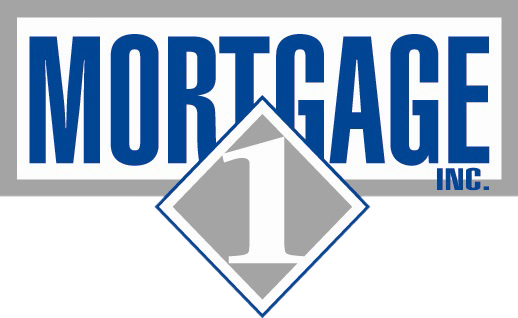
The Truth About Reverse Mortgages
September 29, 2022
Mortgage 1 Breaks Ground with Remote Online Notary (RON) Closing
December 15, 2022If you are a new home buyer, the mortgage process may seem daunting. But it’s really quite easy to understand. We break it down into six easy steps.
The mortgage process proceeds in an orderly fashion. It all stars once you decide you want to buy a house. At the stage, you should probably choose a lender. Choosing a lender is as important as choosing a Realtor. In this article, we walk you through the six main steps of getting a mortgage loan.
| Need Help Understanding the Mortgage Process? It can take expert help to unravel this complex topic. Call a Mortgage 1 loan expert at 1-866-532-0550 or use our Pro SNAP digital app to get the process started and get all the help you need. |
The Six Steps to Getting a Mortgage
Getting a mortgage is an orderly process that moves in successive stages. Some activities, such as getting preapproved or house shopping, can happen at any time. Once you’ve applied for a mortgage, however, each step builds upon the previous step and things must proceed in a fixed order.
The six steps of the mortgage process are:
- Pre-approval
- Making an offer and getting it approved
- Mortgage application
- Loan processing
- Underwriting
- Closing
Buying a house included many other steps too, of course, such as getting an appraisal, getting a home inspection, moving in, getting insurance, etc. But in terms of the mortgage process – the process of getting a loan to pay for the house – these are the steps.
Getting Pre-approved
A pre-approve does two things:
- It gives you an accurate price range prior to home shopping
- It lets sellers know you are serious and are financially qualified
During pre-approve, a lender looks at your income, assets and credit score, then determines what loans you could be approved for, how much you can borrow and what your interest rate might be.
Preapproval is as close as you can get to confirming your creditworthiness without having a purchase contract. Pre-approval can happen pretty quickly, so long as you provide the needed documentation in a timely manner. These days, pre-approval can take place online using applications like Pro SNAP and Home SNAP from Mortgage 1.
House Shopping and Getting an Offer Accepted
House shopping is the fun part of the home buying experience. With your pre-approval in hand telling you how much you can afford, you get to pick the neighborhood and style of house you want to live in.
Of course, home buying does come with its challenges. In a competitive market like we’ve been experiencing, just because you put an offer on a home doesn’t mean you will get it. Others may be bidding on the house, too. Your Realtor can help advise you on making an offer on a home you like, but the decision is ultimately up to you.
Once your offer is accepted, that’s when the real work of the mortgage process takes place.
Applying for a Mortgage
After you’ve had an offer accepted on a house and you know precisely how much you need to borrow, that’s when you officially apply for a mortgage. Mortgage application is somewhat like pre-approval, but is much more stringent and requires more documentation.
When you apply for a mortgage, the lender is going to ask you to provide documentation for the following:
- Employment
- Income
- Assets
- Debts
- Information About the House You Are Purchasing
- Your Financial Status
- The Type of Mortgage You Want
If you are applying for a VA loan, you will need to provide proof of military service. The VA can provide a Certificate of Eligibility (COE).
Loan Processing
Loan processing is when the lender gathers all your documentation and reviews it to make sure it is complete and accurate. The processors put everything together into a complete package that gets passed on to the underwriting team.
The loan processor does the following:
- Orders a credit report (if one is not already pulled for a pre-approval)
- Verifies employment
- Verifies bank deposits and other assets
- Orders property inspection
- Orders property appraisal
- Orders title search
Underwriting
During the underwriting process, underwriters will examine your income, assets, debt-to-income ratio, and credit history. This tells them how likely you are to make your payments on time. They’ll also look at the home price, your projected down payment, and the property’s appraised value to make sure the loan fits your circumstances.
Lenders often use guidelines developed by other agencies like Fannie Mae, Freddie Mac, or the FHA in the underwriting process; this is because different loan types have different requirements. Additionally, lenders may have some terms of their own that applicants have to meet.
At Mortgage 1 we use an application called AI Underwriter to make the underwriting process fast and accurate. AI Underwriter cuts down on underwriting time and helps us perfect the mortgage process to make the consumer experience flawless.
Closing
Closing is the last step in the mortgage process Also called the “settlement,” closing is when you and all the other parties in a mortgage loan transaction sign the necessary documents. At the closing, you will be expected to pay closing costs. These can include:
- Property Appraisal
- Title Insurance
- Processing & Underwriting Fees
- Real Estate Brokerage
- Origination Fees
- Taxes
Closing fees are usually between one percent and five percent of the home purchase price.
At Mortgage 1, our Fast Pass mobile application makes the closing process a breeze. Fast Pass lets you pre-sign most of your closing documents electronically. This reduces the actual closing time from hours to minutes. Some closings can even be done 100% virtually, with no need to meet in person.
Mortgage 1 Ensures a Smooth Mortgage Process
If you need help with the mortgage process, call Mortgage 1 at 1-866-532-0550 or locate a Mortgage 1 loan officer near you to get the ball rolling. Better yet, use our digital mortgage app to get preapproved. It’s fast and easy!





